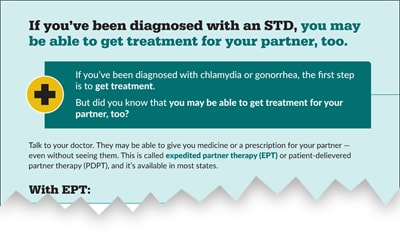Gonorrhea Treatment and Care
Antibiotics have successfully treated gonorrhea for several decades; however, the bacteria has developed resistance to nearly every drug used for treatment.
What is the treatment for gonorrhea?
Gonorrhea can be cured with the right treatment. CDC recommends a single dose of 500 mg of intramuscular ceftriaxone. Alternative regimens are available when ceftriaxone cannot be used to treat urogenital or rectal gonorrhea. Although medication will stop the infection, it will not repair any permanent damage done by the disease. Antimicrobial resistance in gonorrhea is of increasing concern, and successful treatment of gonorrhea is becoming more difficult. A test-of-cure – follow-up testing to be sure the infection was treated successfully – is not needed for genital and rectal infections; however, if a person’s symptoms continue for more than a few days after receiving treatment, he or she should return to a health care provider to be reevaluated. A test-of-cure is needed 7-14 days after treatment for people who are treated for a throat infection. Because re-infection is common, men and women with gonorrhea should be retested three months after treatment of the initial infection, regardless of whether they believe that their sex partners were successfully treated.
Resources for Clinicians
Suspected Gonorrhea Treatment Failure Consultation Form – Healthcare providers and health departments can report suspected gonorrhea cephalosporin treatment failure or any N. gonorrhoeae specimen with decreased cephalosporin susceptibility to the CDC. (December 12, 2022)
- 2021 STI Treatment Guidelines – Gonococcal Infections– Expands on treatment recommendations updated in December 2020. (July 22, 2021)
- Gonorrhea Self-Study Module – An online learning experience that helps users learn how to manage gonorrhea. Free CME/CNE available. (November 1, 2017)
